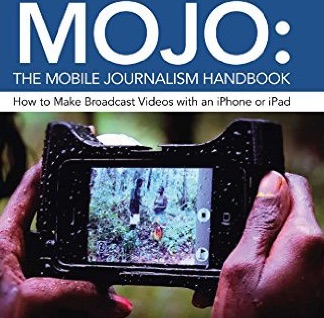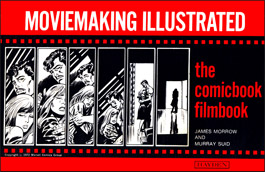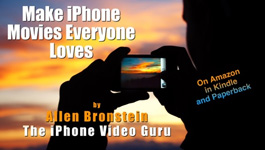Matt Waite is a professor of journalism who heads the cutting-edge Drone Journalism Lab at the University of Nebraska-Lincoln. Not a behind-the-desk teacher, Professor Waite recently has worked to acquire a pilot’s license, required by FAA regulations for commercial users of drones. Surprisingly, journalism is considered a commercial use!
Professor Waite is a person of strong opinions as illustrated in the title of one of his recent blog posts: “Drone Journalism is Illegal and Coming Soon.” In the following interview, he explains the basics of this new field. While his focus is on professional journalism, he offers suggestions and cautions for amateurs who would like to use their drones for capturing newsworthy happenings.
MMM: Could you briefly define drone journalism?
Professor Waite: It’s the gathering of photos, video, or data for news via small unmanned aerial vehicles (UAS)—popularly called “drones.” Drone journalism isn’t just about flight. It involves all the ethical practices, First Amendment principles, and legal responsibilities that are important throughout the field of professional journalism.
MMM: What’s the best use of drones in journalism?
Professor Waite: Providing perspective on stories that have a large spatial extent, stories where scale is important.
MMM: For example?
Professor Waite: Natural disasters. You can see their value in this ABC News video of the impact of a cyclone on Vanuatu. Drone journalist Brant Cumming shot the footage.
MMM: How did you become interested drone journalism?
Professor Waite: I was at a digital mapping conference in San Diego in 2011 and saw a company called Gatewing selling what they called a fully autonomous aerial mapping platform. It was a fixed wing drone with a camera on the bottom and a software setup that made mapping a field or a neighborhood a snap. Thinking about every hurricane, tornado, wildfire and flood I covered as a reporter, I knew instantly that this was going to be a very useful tool.
MMM: Did others share your view?
Professor Waite: The John S. and James L. Knight Foundation, the largest private foundationfor journalism in the world, jumped in right away with a grant that we continue to use today. My university has given me a tremendous amount of and support to pursue this through all the twists and turns.
MMM: Prior to the development of drones, how did journalists achieve the results now possible with drones?
Professor Waite: Innovators have been using manned aircraft for nearly two centures. One of the first things that the early balloon pilots did in Paris in the is put a camera up in the air. After helicopters became commonplace in the Korean War, KTLA TV in Los Angeles pioneered their use in news in the late 1950s in Southern California. News companies have used fixed wing, gyrocopters, helicopters, balloons, gliders—you name it. But the trouble with all those devices is that they’re very expensive. With the disruption of the news business of late, budgets don’t accommodate aircraft ownership or hours and hours of rental time. A big appeal of drones is that they are relatively inexpensive to buy and operate.
MMM: You’ve written about regulations that might stand in the way of evolving drone journalism. How do you think this will play out?
Professor Waite: We should have the answer within the next two years. The regulations currently proposed by the FAA would allow for drone journalism to begin in earnest. The rules will evolve, but the regulations under review right now would open the doors to using small flying robots for news.
MMM: Is drone journalism part of the mobile journalism (MoJo) movement?
Professor Waite: The glib answer is yes in that both are driven by advances in mobile technology, cloud computing and the internet. But drone journalism is separate in that there are significantly more regulations—current and coming—and considerably more safety concerns than with MoJo. It’s hard to cut someone with a smartphone, but it’s easy to hurt someone with a drone if you don’t know what you’re doing. So there are crossovers, but the amount of skill, forethought, and regulatory burden that comes with drones makes drone journalism something else.
MMM: Is there a role for the amateur when it comes to drone journalism?
Professor Waite: As the rules are currently constructed, they almost encourage the non-professional. A professional newsroom wanting to use drones has to get a 333 Exemption from the FAA. This requires the pilot in command to be a licensed manned aircraft pilot. But if you’re a hobbyist flying your drone for fun and not compensation, you can fly under dramatically relaxed regulations. And, recently, the FAA said you can sell that video after the fact if you didn’t go outto intentionally get video to sell. If you just happen to capture news with your drone, you can sell it.
MMM: If amateurs deliberately shoot video of natural disasters, can they give the footage to news organizations?
Professor Waite:. Yes. So there’s a place for it, but honestly I have a bit of unease about this. While the vast majority of hobbyists are thoughtful, by creating these incentives, the FAA is encouraging people who may not have safety as a priority, and I worry about that.
MMM: What advice have you for the layperson who would like to try drone journalism?
Professor Waite: First and foremost, know the rules before you fly. Don’t fly over peoples heads. Don’t fly where there are lots of aircraft. No shot is worth hurting someone, or even scaring them into believing you might hurt them.Know what is going on around you. Recently, airplanes trying to bring fire retardant to wildfires had to wave off because some idiot was flying his drone in restricted airspace. And space around wildfires is always restricted.
MMM: So for you safety is the top concern.
Professor Waite: You’re putting a flying device in the air with rapidly spinning blades. It’s a flying weed whacker. By launching your device in the air, you are assuming responsibility for people on the ground below you and other aircraft in the air around you. You must give way if a manned aircraft comes into the area, you must wave off if a crowd of people forms where you want to fly. In war and in catastrophes, you must also consider your own safety. In war, flying in an active combat zone will draw attention, and it will most likely be attention you don’t want. In a disaster, there’s a highly dynamic situation involving a dangerous environment, rescue operations going on, emotional people. You have to be careful!
MMM: After safety, what other issues should the drone journalist deal with?
Professor Waite: The same rules that apply for mobile journalists on the ground apply in the air. Slow movements, frame your shots, get a variety of angles and depths. If you really care about quality, get a camera gimbal for your drone to settle the shots down. A drone is very light, and in any wind at all, it’ll bounce around, making for bouncy video. A good gimbal takes all of that out.
MMM: As a drone journalist, what would you like the layperson to know about this field?
Professor Waite: There’s a vast difference between ethical and responsible professional journalism and paparazzi stalking celebrities. The number of people who conflate them when talking to me is frustrating. I could care less what Celebrity A is eating, and I don’t believe anyone should be flying a drone over them to find out.
# # #
You can find out more about Professor’s work in drone journalism by subscribing to his newsletter https://tinyletter.com/mattwaite. He calls it “sporadic but high quality.” His Twitter handle is @dronejlab.



 Previous post
Previous post
 Next post
Next post





